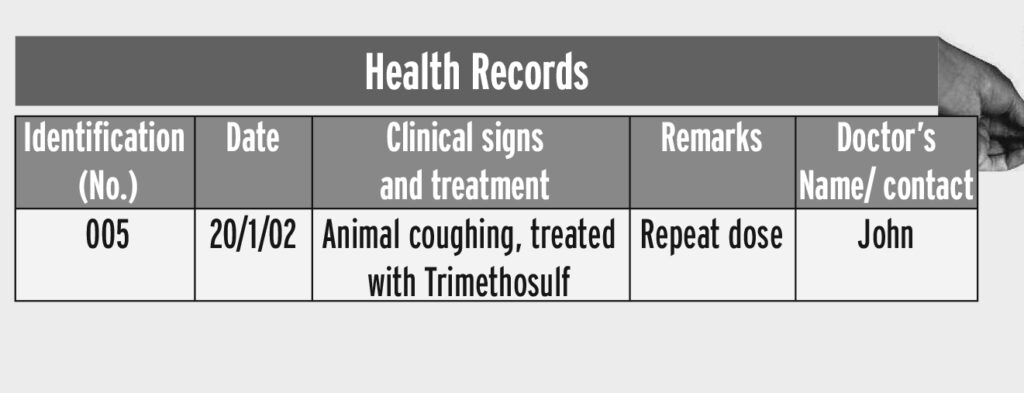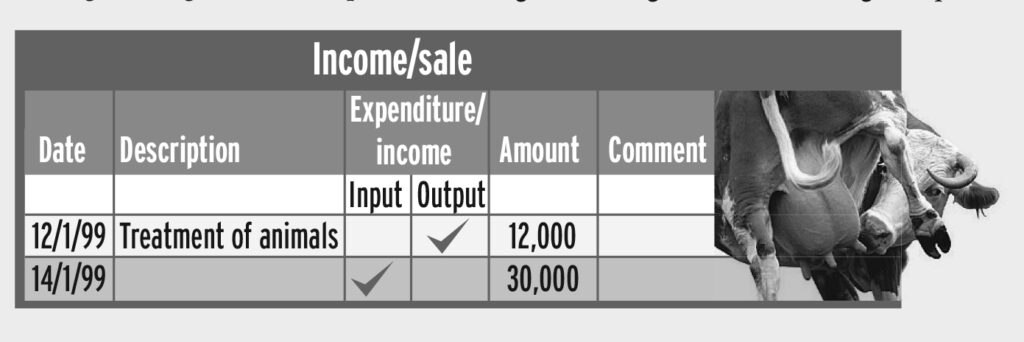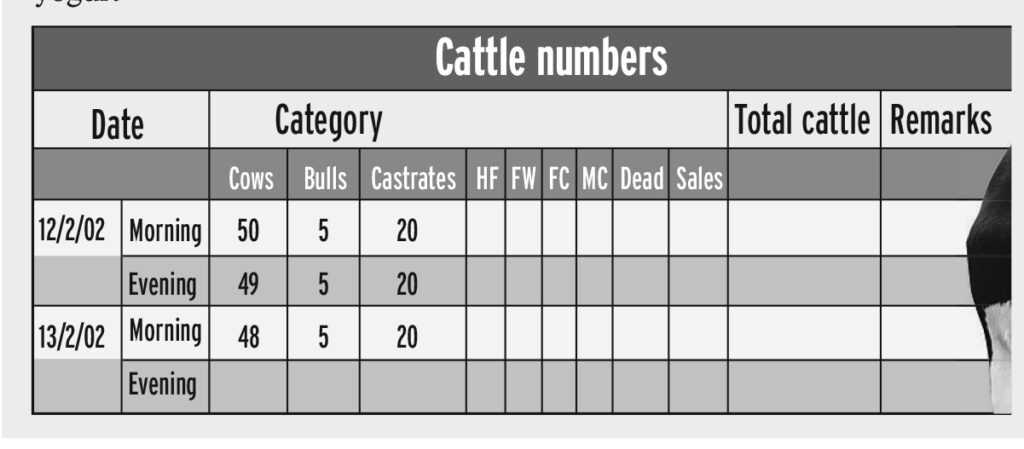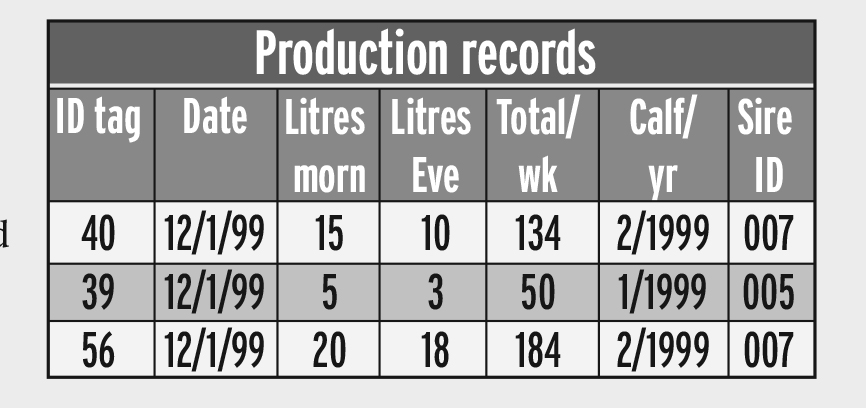Good management practices and procedures is an essential tool in cattle rearing. Farmers need basic knowledge and information about the animals in the day-to-day management of their farms.
Management practices
Feeding and watering, hoof trimming, deworming, tick control, vaccinations and castration. Others are diagnosis and treatment, housing, heat detection and breeding, record keeping, weight estimation and dehorning.
Record keeping
Records are very important tools in the management of any farm. They can be kept for many purposes and will vary in detail depending on the objectives of the farm and what information is needed. Records must be kept in simple formats, which can be understood by all people at the farm.
There are different types of records, which must be kept. All herd records can be kept in an exercise book(s).
Expenditure/costs
Animals, animal feeds, drugs, vet services, equipment, machinery and labour/staff
Income/sale
Milk adult animals, kids, skins, slaughtered and yogurt.
Identification records
These records help the farmers to remember each animal individually. The table below suggests an identification record format. Many farmers or herdsmen do headcounts.

They are useful when making head counts in order to trace the physical presence of the animal and to follow up on performance for each animal. Some of the records used for identification are:-
- Tag number, names given to the animals, colour pattern and sex.
- Breed, number of head count morning and number of head count evening.
These records suggest a reproduction or breeding record format. An A4 size blank record sheet is in annex 2 are used to monitor the expansion of the herd and information on individual breeding performance.
It will also reflect on the performance of the male. Cattle are monitored for service, pregnancy, weight at calving and growth and maturation of off springs. The records include:
- Date of birth, weight at birth, status of birth and date of service (mated)
- Identification of sire (male), expected month of calving
- Date of calving
- Young ones borne alive/dead
Health Records
This information on herd health. An A4 size blank record sheet is in annex 4. They enable farmers to detect the disease conditions affecting the herd, the animals with frequent health problems, the effectiveness of the disease prevention and control strategies on the farm.

Some of the records are:
- Clinical signs, history of sickness, duration of sickness and diagnosis made
- Treatment given
- Number of animal sick
- Previous sickness and treatment
Expenditure and income records
Financial records are vital. To monitor and evaluate the income (or revenue) compared to the expenditure or costs is the essence of good business practice and the key to profitable goat farming.

Table gives an example of an expenditure and income record sheet. An A4 size blank record sheet is in annex 5. They should reflect income versus expenditure and are therefore a key management decision tool as to whether the farmer should improve his goat farming business or change or quit.
Cattle numbers

- Carry out a head count every morning and evening
- Inspect flock regularly with impromptu checks
- In case of reported deaths ask for evidence like skins
Production records
The table shows production record sheet, where individual animal performance records can be recorded. Alternatively, the production records can be compiled on a herd basis.

Such records are indicators of the economic performance of the herd or an individual performance. They will give signals when an animal is due for culling. Some of the production records are:
- Litres of milk per day
- Young ones raised
- Number of animals successfully mated/sired (male).
- Number of times calves in two years number of times of calving in its lifespan and number of offspring produced





